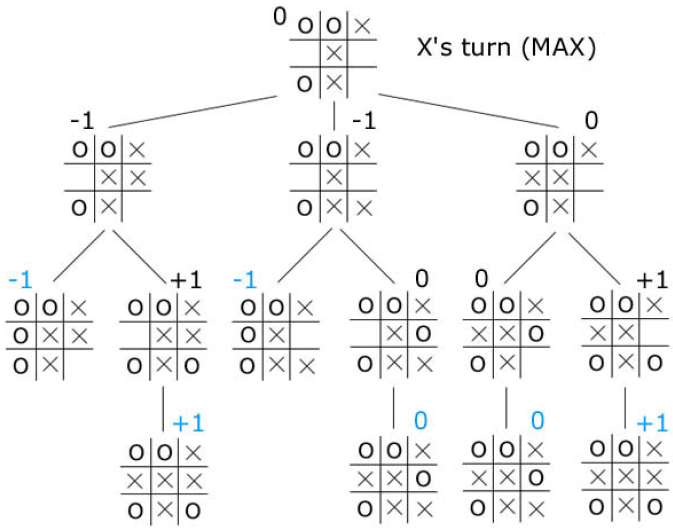Adversarial Search
Adversarial Search: We will set up a framework for formulating a multi-person game as a search problem. We will consider games in which the players alternate making moves and try respectively to maximize and minimize a scoring function (also called utility function). To simplify things a bit, we will only consider games with the following two properties:
- Two player - we do not deal with coalitions, etc.
- Zero sum - one player’s win is the other’s loss; there are no cooperative victories
We also consider only perfect information games.
Game Trees: The above category of games can be represented as a tree where the nodes represent the current state of the game and the arcs represent the moves. The game tree consists of all possible moves for the current players starting at the root and all possible moves for the next player as the children of these nodes, and so forth, as far into the future of the game as desired. Each individual move by one player is called a "ply". The leaves of the game tree represent terminal positions as one where the outcome of the game is clear (a win, a loss, a draw, a payoff). Each terminal position has a score. High scores are good for one of the player, called the MAX player. The other player, called MIN player, tries to minimize the score. For example, we may associate 1 with a win, 0 with a draw and -1 with a loss for MAX.
Example : Game of Tic-Tac-Toe

Above is a section of a game tree for tic tac toe. Each node represents a board position, and the children of each node are the legal moves from that position. To score each position, we will give each position which is favorable for player 1 a positive number (the more positive, the more favorable). Similarly, we will give each position which is favorable for player 2 a negative number (the more negative, the more favorable). In our tic tac toe example, player 1 is ’X’, player 2 is ’O’, and the only three scores we will have are 1 for a win by ’X’, -1 for a win by ’O’, and 0 for a draw. Note here that the blue scores are the only ones that can be computed by looking at the current position.